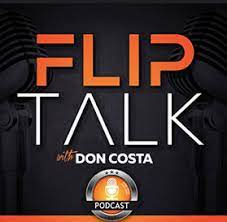by Eddie Speed, Founder of NoteSchool

Real estate investors today are facing a changing market place. New regulations, historical lawsuits and settlements, along with a still sluggish economy have affected the supply and demand of real property in a significant way. These profound effects will set the course of real estate investing for the next several years. Real estate investors will have to adjust their approach to real estate as yesterday’s strategies and techniques will not yield the same result in the future.
The good news is that real estate investors have always had to change their tactics as market conditions change. Back in the early 2000’s real estate investors jumped into the rehab market buying up foreclosed fixer uppers. Still others jumped into buying preconstruction property which they would flip to another buyer for a quick profit. Shortly after real estate prices plummeted in the 2007 financing crisis, investors switched gears and starting buying short sales approved by lenders and REO’s owned by lenders. Enter the robo-signing lawsuits, new legislation and a broken economy and again real estate investors have to adjust and adapt.
Where are the deep discounted REO’s? Why have short sales all but dried up? Where is the foreclosure inventory? Why are cap rates on rental property so low? The answers to those questions ultimately come down to the issue of supply and demand. Housing inventory in general is down, while the foreclosure and REO inventory is down significantly yet cash investors, stung by the memory of stock losses, are hungry for safer returns and are buying properties at increasing prices driving yields down.
Nationwide, foreclosures are selling at an anemic 13% discount while rental properties are providing a paltry 8% cap rate. These numbers, as well as inventory numbers, can be easily found with a quick Google search. If you have been an active real estate investor, you don’t even need to look those numbers up as you have already experienced there impact.
So, is this simply the new market you have to live with? It may be for you unless you examine the financial side of the business. Let’s face it; financing has always been the defining factor when it comes to real estate. The government’s involvement in financing has always been a defining factor. Not sure about that? Do some research on the history of FHA. You will find that before FHA this was a nation of renters. You couldn’t get a mortgage unless you put 50% down and that mortgage would not 30 but 5 years.
The government created Fannie Mae and Freddie Mac and as a result we had a significant growth as more people were able to buy homes (and of course more homes being built meant many more jobs in numerous industries).
Today’s legislation is pushing banks to refinance existing loans while also putting restrictions on new loans. Other laws are making it more expensive for banks to foreclose and to hold foreclosed properties. In another huge move, new Fannie and Freddie actions have incentivized banks to sell more troubled loans rather than foreclose. These changes have led to a massive supply of troubled, non-performing notes.
How massive? Estimates show that there is 4 times the amount of non-performing notes available right now then the total number of foreclosures sold since 2006. Please re-read that. You can look that up at Realty Trac. With that much of a supply, what do you think has happened to the prices?
Industry numbers show that the average price for a non-performing note is about $9000. That note is secured by a property with a value of $60,000. I would re-read that sentence as well. Where else can you get discounts like that today? You can probably see why non-performing notes is the hottest topic in real estate today.




















